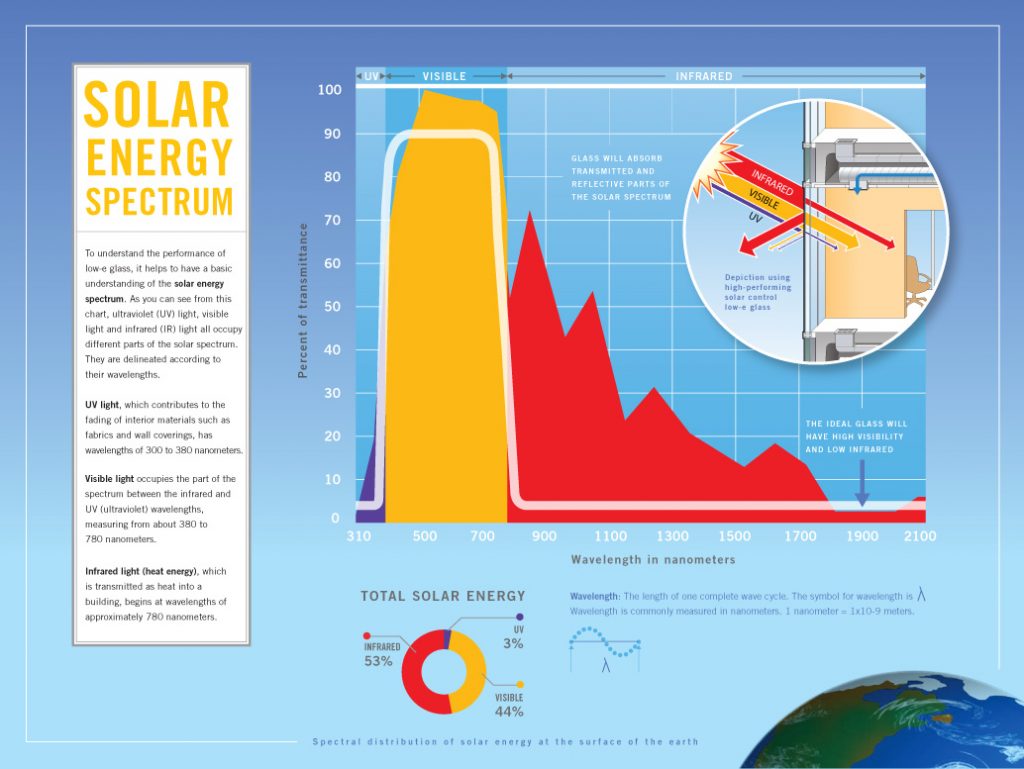
Coatings are thin layers of metal applied to glass to improve solar performance. The first coatings utilized on building facades were reflective coatings which provide a mirror-like appearance and reduce solar heat gain by reflecting the sun’s energy away from the building.
Today, the most popular coatings applied to glass are low-emissivity (Low-E) coatings. Coatings with low-emissivity properties have low heat transfer properties and offer higher light transmission than traditional reflective coatings.
Coating technology has grown rapidly over the past decade, nowadays we can see wide range of coating products in the market. Coatings can be applied to clear or tinted glass substrates. In addition, a silk-screen pattern can be applied to the same surface as the coating for excellent solar performance and appearance.
Appearance and Performance
The specific coating needed for a given project is typically dictated by a required solar performance or a desired appearance. Talk to one of our staff for more information.
Surface Designation
When describing glass products there are industry standard recommended surface designations. Each ply of glass has two surfaces. The surface facing the exterior of the building is referred to as surface #1, the back of this glass ply is surface #2. For glass units with multiple glass plies, there could be 6 or more surfaces. Shown here are a few examples:

For cooling dominated buildings, the best solar performance is achieved when the coating is applied to the #2 surface, therefore Viracon coatings are located on the #2 surface.
There are actually two different types of low-e coatings: passive low-e coatings and off-line low-e coatings. Most passive low-e coatings, are manufactured using the pyrolytic process – the coating is applied to the glass ribbon while it is being produced on the float line, the coating then “fuses” to the hot glass surface, creating a strong bond, or “hard-coat” that is very durable during fabrication. Finally, the glass is cut into stock sheets of various sizes for shipment to fabricators. Passive low-e coatings are good for very cold climates because they allow some of the sun’s short-wave infrared energy to pass through and help heat the building during the winter, but still reflect the interior long-wave heat energy back inside.

Most solar control low-e are manufactured using the MSVD process – the coating is applied off-line to pre-cut glass in a vacuum chamber at room temperature. This coating, sometimes referred to as a “soft-coat,” needs to be sealed in an IG or laminated unit and has lower emissivity and superior solar control performance. Over the years the technique of ‘temperable’ soft-coat low-e has become mature and widely used in projects worldwide. This enables manufacturers to better control lead time and greatly shorten replacement timeframe.
That being said, the best performing solar control coatings are MSVD and are ideal for mild to hot climates that are more dominated by air conditioning use in commercial buildings.







